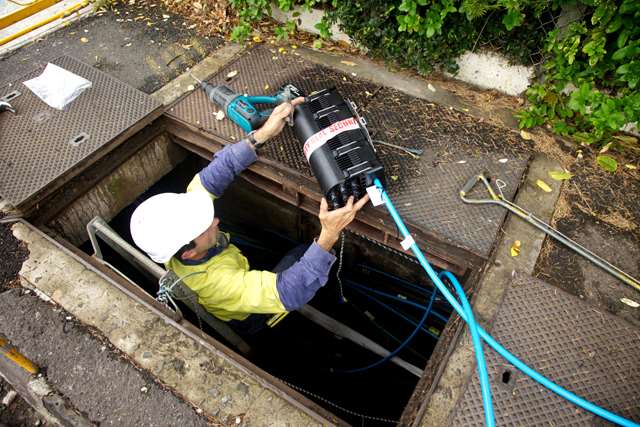The NBN is facing a cost blowout of up to $15 billion and will drop almost half a million premises from its planned fibre footprint, the latest corporate plan shows.
The equity blowout means that instead of costing $41 billion, an NBN that uses a so-called multi-technology mix will cost between $46 billion and $56 billion, including "contingency" funding of $4.6 billion.
NBN CEO BIll Morrow said the company is targeting a "base case" of $49 billion - what it now thinks the network will cost - and attempted to downplay the extra $8 billion it needs to find to make good on this number.
"If you think about an $8 billion change in a project of this magnitude … it's not that material in my view and the experience that I've had in other countries around the world," Morrow said.
Morrow confirmed that NBN has known about the blowout since "earlier this year" but did not say why it took until late August to publicly reveal its existence.
A breakdown of an $8 billion blowout - should it be limited to that - includes $1 billion in extra costs stemming from agreements with Telstra and Optus to sell their HFC assets to NBN, $3 billion in "increased operating expenses" and $4 billion on extra capital expenses.
NBN will be forced to look to debt facilities to pick up the extra shortfall from 2017 as, NBN noted, "the equity contribution of the Government remains capped" at $29.5 billion.
Communications Minister Malcolm Turnbull said there were a couple of debt funding options available and "no final decision has been taken" on which might be most attractive.
"The Government could provide the debt funding directly, NBN could borrow the money on its own credit from the market or it could borrow it with the support of a Government guarantee," Turnbull said.
Blame Labor
At a briefing in Sydney, much of the attention focused around how the cost estimates could have blown out by so much since the NBN Strategic Review, the results of which came out less than two years ago.
Turnbull attributed the blowout to the fact that the Strategic Review "was done at a great rush".
"I'm not pointing fingers of blame at anyone but the reality is there was a lot of very inadequate and inaccurate financial information at the end of 2013, and it took [new CFO] Stephen [Rue] quite a while to get a handle on it.
"You've got to remember that the purpose of the strategic review was - within 60 days of the election, in effect a six week project - to work out whether the company's strategy was right, whether the all-fibre build was right and whether there was a cheaper, faster alternative approach.
"That had to be done quickly because … a big project like this takes a long time to change course."
However, Turnbull repeatedly blamed Labor for initiating the project in the first place, and for embarking on an all-fibre model.
"The reality is that under the Labor Party neither the company nor the Labor Government knew what it would cost or how long it would take to do the project," he said.
"That's why it was so extraordinarily crazy to give this project to a startup business owned by the government.
"If you wanted to mitigate the risks - and the risks are big - of a project like this it would be done by a big telco that had been around for a long time."
Turnbull also claimed that, had the NBN continued on an all-fibre trajectory, it "would have had a peak funding requirement of $74 billion to $84 billion and would not be finished until as late as 2028".
However, shadow communications minister Jason Clare rebutted Turnbull's claims.
"The NBN is rolling out slower than Malcolm Turnbull promised, and it is more expensive than he promised," Clare said.
"Malcolm Turnbull has no one else to blame for this cost blowout."
Less fibre
While NBN executives spent the hours prior to announcing the cost blowout detailing a lengthy list of "achievements" in the past year, news of the blowout - and details in the company's latest corporate plan - largely took the gloss off NBN's performance in other areas.
Of most concern is another significant cut to the number of premises slated to receive fibre connections under the current NBN model. Fibre was expected to cover about 24 percent of all premises in the NBN footprint, but that will now drop to 20 percent.
Based on NBN's own numbers, the reduction is about 480,000 premises. Add the half million premises axed from the fibre footprint after the Coalition came to power, and almost a million premises have lost promised fibre connections since the LNP Government came to power.
The latest cuts to the fibre footprint weren't entirely unexpected: the Strategic Review flagged a fibre footprint in the multi-technology mix NBN of "~20-26 percent of premises", meaning the latest revisions fall into that range.
It appears most of those slated to receive fibre will now be in line for hybrid fibre coaxial (HFC) connections, as its share of the MTM will rise from 30 percent to 34 percent under the new corporate plan.










